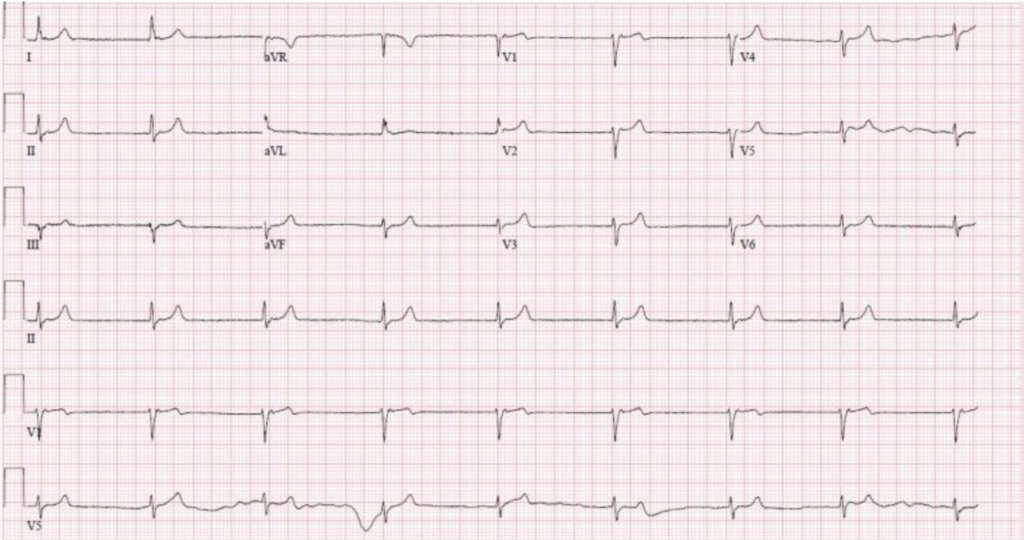History
A 45-year-old woman presented to the clinic with several concerning symptoms:
- Chief Complaints: Fatigue, frequent infections, and easy bruising over the past few months.
- Medical History: Unremarkable, with no chronic illnesses or prior surgeries.
- Social History: No recent travel, no exposure to known toxins.
- Family History: No family history of hematological disorders.
- Medications: No current medications or recent use of potentially myelosuppressive drugs.
General Examination
On physical examination, the following findings were noted:
- Appearance: The patient appeared pale and slightly jaundiced.
- Skin: Presence of petechiae on lower extremities, indicative of possible thrombocytopenia.
- Vital Signs: Stable, with no fever, hypotension, or tachycardia.
Systemic Examination
A detailed systemic examination revealed:
- Lymphatic System: No lymphadenopathy was detected.
- Abdomen: Mild splenomegaly was noted upon palpation.
- Cardiovascular and Respiratory Systems: Normal heart sounds and clear lungs, with no signs of heart failure or respiratory distress.
Laboratory Reports
Initial laboratory tests provided key insights:
- Complete Blood Count (CBC):
- Hemoglobin: 8 g/dL (low)
- White Blood Cell Count: 2,000/µL (low)
- Platelet Count: 50,000/µL (low)
- Reticulocyte Count: Low, indicating reduced production of red blood cells.
- Peripheral Blood Smear: Showed pancytopenia without the presence of abnormal cells.
- Liver and Renal Function Tests: Within normal limits.
- Viral Serologies: Negative for HIV, hepatitis B and C, and Epstein-Barr virus.
Peripheral Smear and Bone Marrow Examination
Further investigation with peripheral smear and bone marrow biopsy revealed:
- Peripheral Smear: Confirmed pancytopenia with normocytic, normochromic red cells, and absence of immature or abnormal white cells.
- Bone Marrow Biopsy: Hypocellular marrow with a marked decrease in hematopoietic cells and no evidence of malignancy, suggesting a diagnosis of aplastic anemia.
Overview
Pancytopenia is characterized by the simultaneous reduction of red blood cells, white blood cells, and platelets. This condition can arise from various underlying causes, necessitating a detailed diagnostic approach.
Causes of Pancytopenia
Pancytopenia can result from several etiologies, including:
- Bone Marrow Disorders: Such as aplastic anemia, myelodysplastic syndromes, and leukemia.
- Infections: Including HIV, hepatitis, and Epstein-Barr virus.
- Nutritional Deficiencies: Particularly vitamin B12 or folate deficiency.
- Medications and Toxins: Including chemotherapy, certain antibiotics, and exposure to radiation or benzene.
- Autoimmune Diseases: Such as systemic lupus erythematosus (SLE).
Approach to Pancytopenia
The approach to a patient with pancytopenia involves:
- Detailed History and Physical Examination: Identifying signs of chronic illness, drug use, and exposure to toxins or infections.
- Laboratory Tests: Conducting CBC, reticulocyte count, and peripheral blood smear as initial tests. Further tests may include liver and renal function tests and viral serologies.
- Bone Marrow Examination: Performing a bone marrow biopsy to assess cellularity and detect abnormal cells.
- Specialized Tests: Utilizing tests like flow cytometry, cytogenetic analysis, and autoantibody panels based on suspected causes.
Management of Pancytopenia
Treatment strategies are tailored to the underlying cause:
- Aplastic Anemia: Managed with immunosuppressive therapy and bone marrow transplantation.
- Nutritional Deficiencies: Treated by supplementing the deficient vitamins (B12 or folate).
- Infectious Causes: Addressed by treating the underlying infection.
- Drug-induced Pancytopenia: Managed by discontinuing the offending drug and providing supportive care.
Conclusion
Pancytopenia is a complex condition that requires a thorough diagnostic and management approach.
